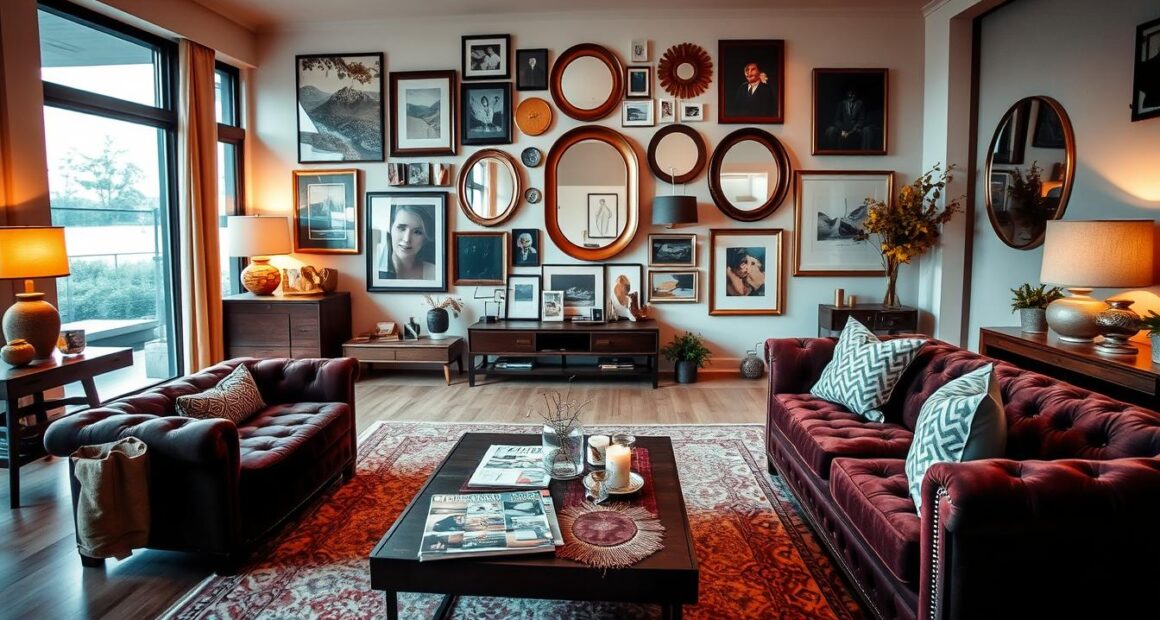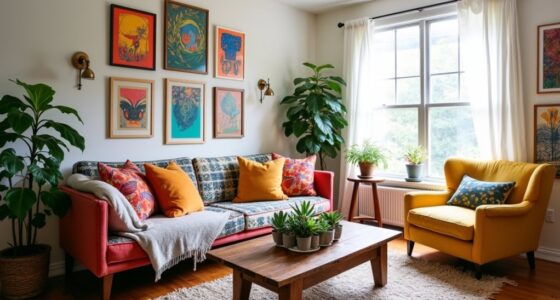Have you ever walked into a friend’s home and felt an instant connection, as if the space mirrored their personality? That’s the magic of personal style in home decorating. It’s more than just coordinating colors or arranging furniture; it’s about creating a sanctuary that resonates with who you truly are. Whether you embrace bohemian vibes, minimalist aesthetics, or a mix of influences, your unique aesthetic is shaped by your life experiences, tastes, and cherished possessions. This decorating guide will not only help you uncover your style but also inspire you to turn your living space into a reflection of your individuality—an empowering journey toward comfort and creativity.
Key Takeaways
- Understanding personal style is crucial for effective home decorating.
- Your unique aesthetic reflects your individuality and life experiences.
- This guide offers essential steps to discover your personal style.
- A well-decorated space can enhance comfort and inspire creativity.
- Home decorating goes beyond aesthetics; it’s about creating a meaningful environment.
Why Personal Style Matters in Home Decorating
The importance of personal style in home decorating cannot be overstated. Your living space should reflect who you are, making it crucial to embrace a decor identity that resonates with your taste. When you focus on incorporating elements that signify your individuality, you create a sanctuary that feels genuinely yours.
The significance of home decorating lies in its ability to transform a house into a home. It’s tempting to follow the latest trends seen on social media, but doing so often leads to a disconnect. Rather than showcasing your personality, these trends can overshadow your unique style.
By understanding the importance of personal style, you take control of your environment. Authentic decor allows you to cultivate a space that is not only comfortable but also cohesive. Each piece should narrate a story that mirrors your desires, thereby avoiding the pitfalls of generic design that can become stale over time.

Identifying Your Current Decor: Where Do You Stand?
Assessing your current home decor forms a crucial step in defining your personal style. Take a moment to reflect on how your space makes you feel. Are you living in a time capsule, or does your home authentically represent who you are today? A thorough decor assessment will help uncover elements that resonate with your identity and pinpoint areas that may need revitalization.
Begin your style evaluation by taking stock of various aspects of your home, including color schemes, furniture choices, and the overall ambiance. Ask yourself what each item brings to your space and whether it aligns with your current tastes. This inquiry not only clarifies your preferences but also lays the groundwork for potential changes.
Consider creating a visual inventory of your decor. This could involve photographing each room or categorizing items based on their emotional significance to you. Documenting your findings allows for a clearer vision of your current home decor landscape and assists in deciding which pieces to keep, repurpose, or remove.
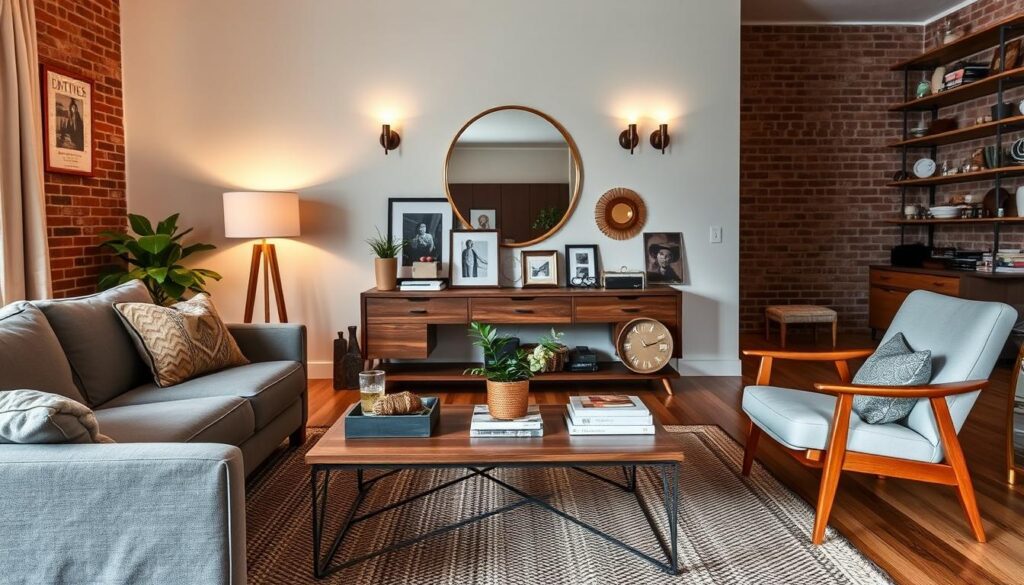
By understanding your present situation, you will cultivate a deeper appreciation for what fills your home. Embrace this opportunity to ensure your space genuinely reflects your evolving self.
Start with Self-Reflection
Self-reflection in decor serves as an essential first step in uncovering your unique decorating style. Begin by asking yourself critical questions about your current living situation and how you spend time at home. Consider the feelings you wish to evoke in each room. Do you seek a calming retreat or a vibrant entertaining space? Understanding your personal needs will direct your choices and help you create a home that resonates with your lifestyle.
Your lifestyle plays a significant role in determining the elements that contribute to home comfort. Evaluate what you love, from colors and textures to furniture styles. Create a list of adjectives that describe how you want your space to feel, whether it’s cozy, modern, or eclectic. This process illuminates the essence of what makes a house truly feel like home.
Ultimately, this self-reflection in decor not only leads to a visually appealing space but also fosters an environment that genuinely feels right for you and your family. It transforms your home into a personal haven where comfort and aesthetic harmoniously coexist.

Discover Your Belongings: Meaningful Items That Speak to You
Exploring your belongings unveils a wealth of stories behind the items you hold dear. Each piece you own can transform a space, reflecting your personality and values. Meaningful decor items evoke emotions and memories in your home, creating a sense of warmth and belonging. By carefully selecting these treasures, you start unveiling your unique style.
Sentimental Objects and Their Roles
Sentimental treasures carry stories that connect you to significant moments in your life. These objects might include family heirlooms, photographs, or souvenirs from travels. Each item serves a purpose beyond mere decoration; they create a narrative that enhances your living environment. Consider how these items blend within your decor and how they can inspire not just aesthetics, but also conversation and connection.
Balancing Minimalism and Maximalism
As you curate your collection, think about the balance between minimalism and maximalism. Minimalism emphasizes simplicity and functionality, promoting a peaceful living space. This approach encourages you to select meaningful decor items thoughtfully, allowing your treasured pieces to stand out. On the other hand, maximalism celebrates individuality and creativity, inviting an array of colors and textures. Striking the right balance allows your home to feel inviting without overwhelming clutter.
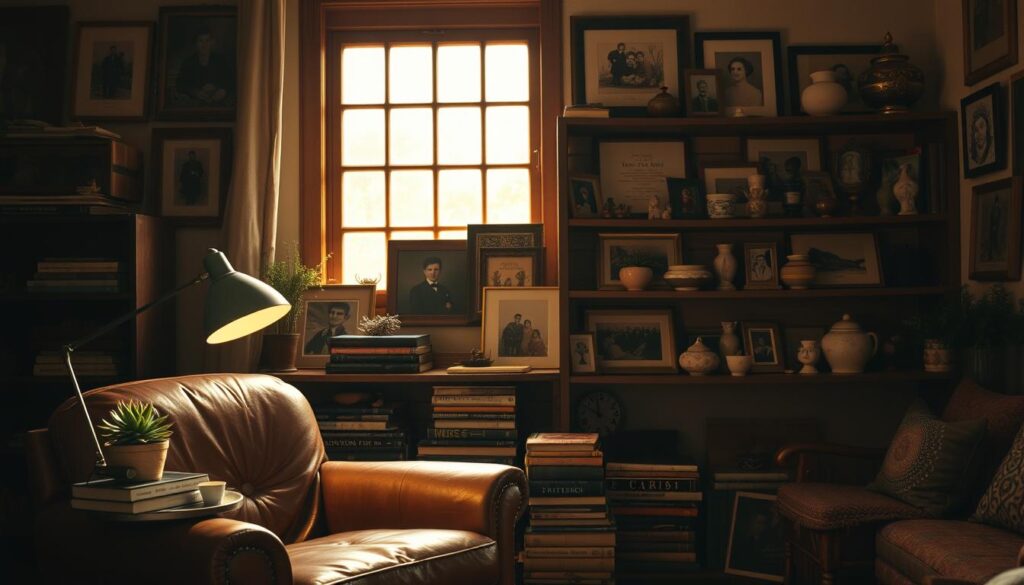
Exploring Different Home Decor Styles
Delving into various home decor styles plays a crucial role in your journey toward defining personal style. By familiarizing yourself with a range of aesthetics, you can discover which interior design options resonate with you. This understanding allows for a richer style exploration, embracing elements that truly reflect your individuality.
Common home decor styles include:
- Modern: Characterized by clean lines and minimalist features, modern decor often uses neutral colors and functional furniture.
- Bohemian: This style embraces creativity and freedom, featuring vibrant patterns, eclectic accessories, and a mix of textures.
- Rustic: Emphasizing natural materials like wood and stone, rustic decor creates a warm, inviting atmosphere, often inspired by countryside living.
- Eclectic: An amalgamation of various styles, eclectic decor allows for individual expression, encouraging the blending of different elements for a unique look.
Exploring these decor styles not only helps identify what you love, but also provides opportunities to curate a personal space that feels authentic. By borrowing elements from different home decor styles, you can create an environment that is uniquely yours.
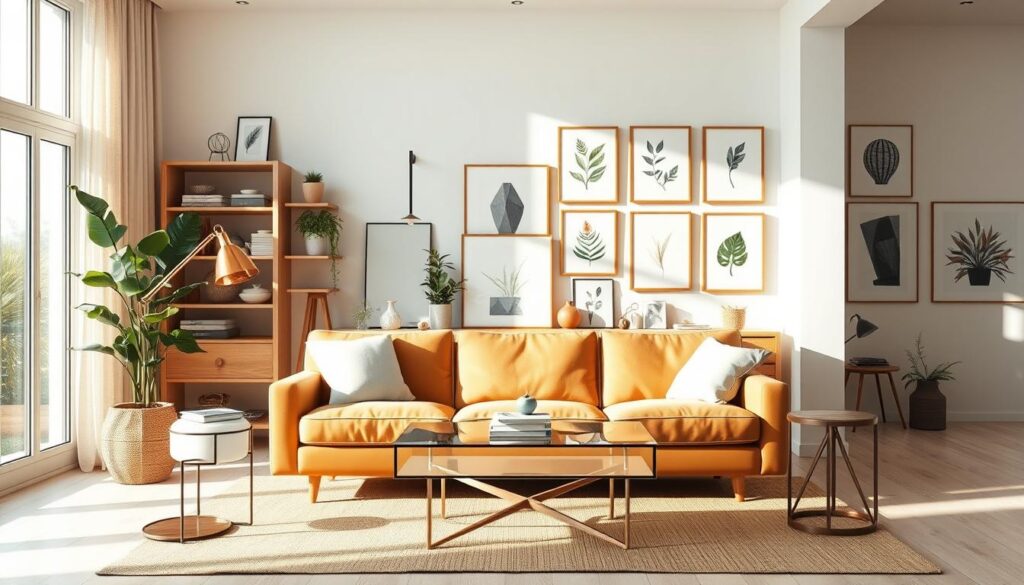
| Style | Key Features | Color Palette | Typical Materials |
|---|---|---|---|
| Modern | Clean lines, minimalist | Neutral colors | Metal, glass |
| Bohemian | Eclectic, vibrant | Bold colors | Textiles, wood |
| Rustic | Natural, warm | Earth tones | Wood, stone |
| Eclectic | Mix of styles | Varied | Mixed materials |
A Home Decorating Guide to Find Your Personal Style
Finding your personal style can feel overwhelming at first, but a well-structured home decorating guide streamlines the process. This guide helps you define what truly matters in your living space, moving beyond fleeting trends and societal influences.
Begin by identifying elements that resonate with you. Focus on colors, textures, and designs that evoke positive feelings. A unique decorating approach includes infusing your personality into each corner of your home, transforming it into a space that tells your story.
Take the time to evaluate your furniture and decorations. Each piece should reflect your preferences and lifestyle. By prioritizing your needs and wants, you create a nurturing home environment that feels uniquely yours. Embrace the journey of finding personal style and enjoy the satisfaction that comes from a home tailored to your taste.
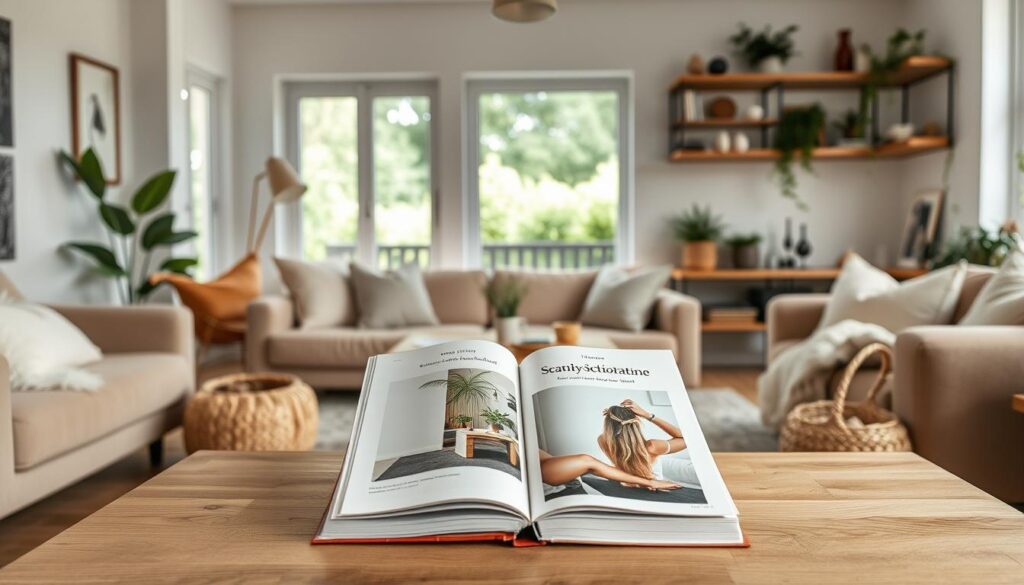
Gathering Inspiration for Your Unique Design
Finding the right inspiration is a pivotal step in developing your personal design aesthetic. When exploring different styles, resources like Pinterest and home decor magazines can offer a wealth of interior design inspiration. These platforms allow you to curate a collection of visuals that resonate with your preferences, making it easier to identify the elements you want in your space.
Utilizing Pinterest and Home Decor Magazines
Pinterest serves as a powerful tool for discovering unique styles. You can search for specific themes, colors, or trends, creating boards filled with your favorite Pinterest decorating ideas. Home decor magazines complement this digital approach, showcasing the latest trends and timeless designs. Both resources help you visualize combinations of textures, colors, and shapes, assisting in your decision-making process.
Viewing Showrooms and Local Shops
Nothing compares to the hands-on experience of visiting local shops for decor. These venues allow you to see textures firsthand and get a feel for the scale and color schemes that best fit your home. Pay attention to how different elements work together in showroom displays. This exploration can significantly influence your interior design choices, making the final selection process more intuitive and satisfying.

Incorporating ideas from various sources creates a well-rounded design plan that reflects your unique style. Embrace this exploration as a way to deepen your connection with your home’s aesthetic and functionality.
Creating a Mood Board for Visual Reference
Engaging in mood board creation is an essential step in defining your unique style. A mood board serves as a visual reference for decor, allowing you to compile colors, textures, and patterns that resonate with your artistic vision. This compilation of inspirations helps to clarify your design preferences and aids in making cohesive choices when decorating your space.

As you gather various elements for your mood board, consider these key aspects:
Collecting Colors, Textures, and Patterns
- Color Schemes: Start with your favorite color schemes. Analyze what hues evoke positive emotions and reflect your personality.
- Textures: Incorporate different textures, such as fabrics, wood, and metals. Understanding how these elements complement each other adds depth to your decor choices.
- Patterns: Include various patterns that catch your eye. Whether floral, geometric, or abstract, these can help steer the visual narrative of your space.
By conducting this mood board creation process, you create a tangible reference that keeps your design journey focused and aligned with your overall aesthetic goals. Embrace the creativity and imagination this exciting task brings as you develop your ideal decor style.
| Element | Purpose | Examples |
|---|---|---|
| Color Schemes | Define mood and ambiance | Pastels, Neutrals, Bold Colors |
| Textures | Add dimension and tactile interest | Velvet, Linen, Wood, Metal |
| Patterns | Enhance visual interest and style | Geometric, Floral, Striped |
Establishing a Budget for Decorating
Creating a decorating budget is essential for effective planning. It aids in managing expenditures while still allowing you to achieve your vision for your space. By deciding how much to invest in various elements such as furniture, paint, and accessories, you facilitate a smoother decorating journey.
A well-thought-out budget provides the flexibility to evolve your design over time. This financial plan ensures you can save and allocate costs effectively, allowing you to focus on meaningful purchases without the pressure of overspending during a single shopping excursion.
Assigning Costs to Different Elements
When assigning costs, consider breaking your decorating budget into specific categories. This will help you understand where your money goes and prioritize your spending. Common categories include:
- Furniture
- Paint and Wall Treatments
- Textiles (like curtains and rugs)
- Accessories (such as artwork and decorative items)
- Lighting Fixtures
For those interested in DIY home decor projects, integrating these efforts into your cost allocation in decor can lead to exciting transformations without breaking the bank. Allocating funds for DIY supplies enables creativity while emphasizing budget control. Remember, a balanced decorating budget is key to achieving your home decor dreams while fostering responsible spending habits.
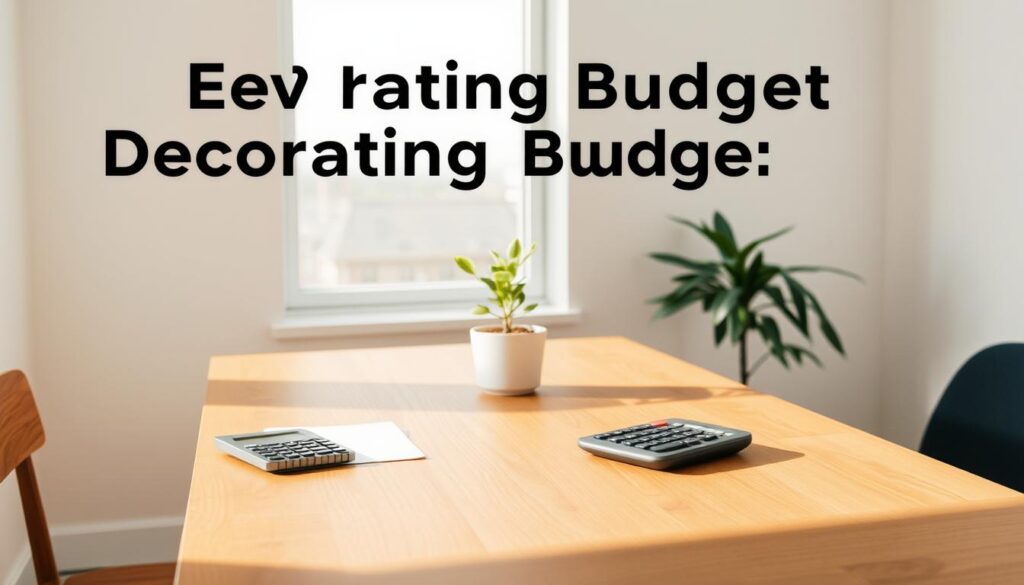
Experimenting with Bold Choices
Daring to embrace bold decor choices can be a transformative journey in your home. You might find that incorporating vibrant colors or unexpected patterns brings new life into your spaces. The beauty of design experimentation lies in the freedom to explore artistic boundaries. Methodically introducing striking elements like a bright accent wall or a standout piece of furniture can create focal points that reflect your personality.
When engaging in creative home styling, open yourself up to varied aesthetics. Mixing different styles can lead to unique outcomes you had not anticipated. Don’t shy away from blends that challenge conventional norms. Allowing creative freedom lets your decor tell your story, blending what you love with intricate designs that captivate the eye.
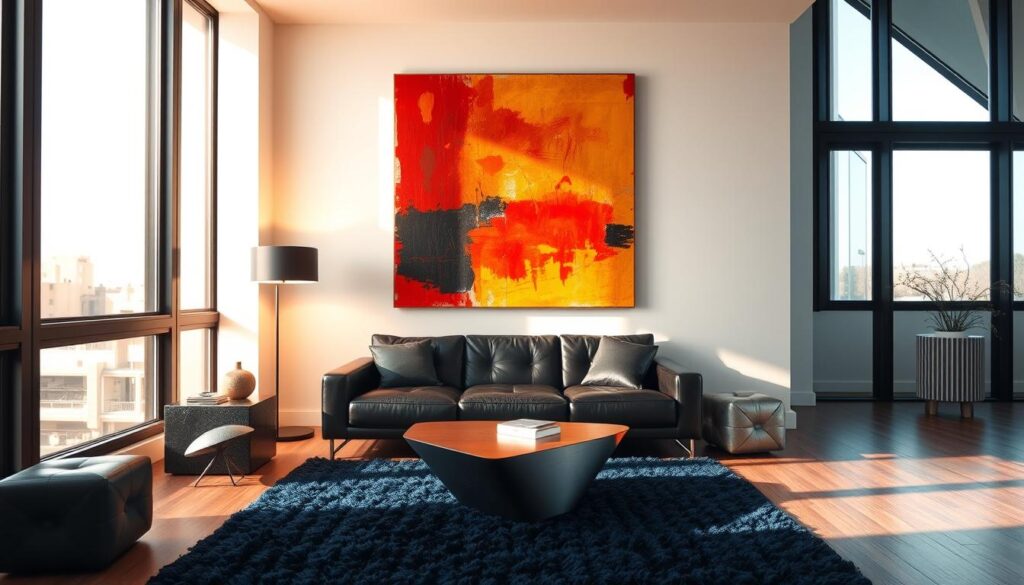
Remember, the most impactful decor often springs from a willingness to take risks. Celebrate your individual taste by incorporating eye-catching artwork or eclectic prints. Each bold choice can contribute to an atmosphere that is distinctly yours, encouraging a sense of comfort and belonging in your home.
Functionality First: Balancing Practicality and Aesthetics
Your home should not only look great but also function effectively. When you think about practical home decor, it’s essential to prioritize spaces that cater to your lifestyle. This balancing act between aesthetics and functionality leads to harmony in your living environment. Focusing on comfort in decorating allows your home to serve its intended purpose while remaining pleasing to the eye.
The Importance of Comfort and Usability
Comfort in decorating plays a vital role in your overall satisfaction with your space. When furniture is thoughtfully chosen for ergonomic benefits and usability, it enhances your living experience. Consider how different areas in your home can accommodate daily activities while still being stylish. Choosing practical home decor items that serve multiple functions helps to minimize clutter, ensuring your space feels open and inviting.
Moreover, functional design contributes significantly to a home that feels good to live in. Each item should be not only visually appealing but also easy to use and maintain. By prioritizing functionality, you allow personal style to flourish without compromising on comfort or usability.
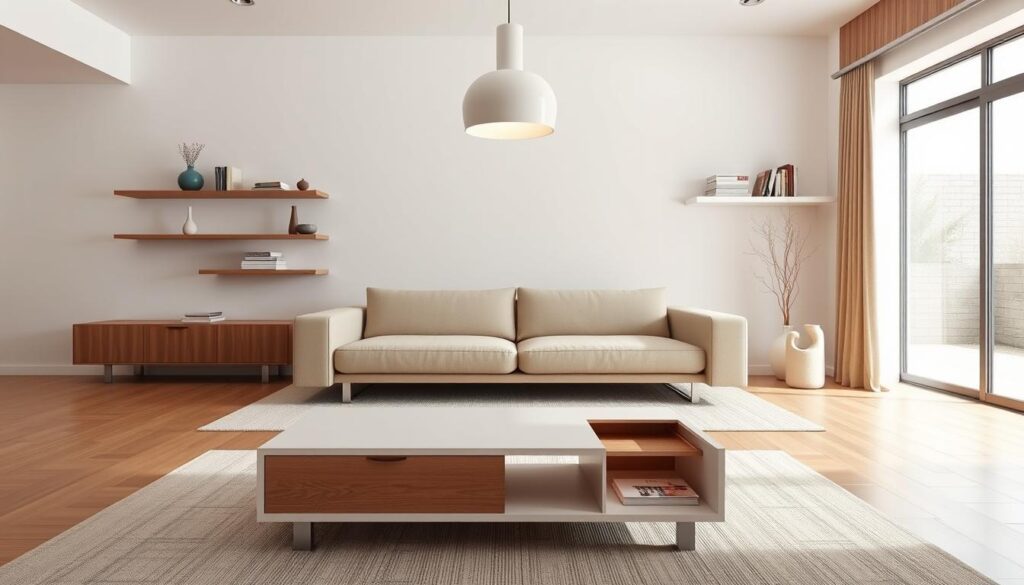
Evolving Your Space Over Time
Your journey in home transformation does not end with the initial design. As you move through different phases of life, your personal style and the functionality of your space will naturally shift. Understanding the essence of space evolution is vital for creating an environment that resonates with who you are today.
Regularly reassessing your surroundings allows you to make decisions that align with your current needs. Whether it’s adding new pieces or refining existing decor, adapting decor in small increments keeps your home feeling fresh and inviting. You can create a space that not only looks good but also serves its purpose efficiently.

Consider the following strategies to facilitate the evolution of your space:
- Identify elements that no longer serve you
- Incorporate new trends that resonate with your personal aesthetic
- Evaluate how your lifestyle changes impact your decor needs
Every update you make contributes to a cohesive home transformation that reflects your ongoing journey. Embrace this process and watch your space evolve beautifully over time.
Conclusion
As you embark on your home decor journey, discovering your personal style can be a deeply rewarding experience. This process is not merely about arranging furniture or selecting colors; it’s an opportunity for self-reflection and exploration that culminates in a space that embodies who you are. By taking the time to understand your preferences and values, you create an environment that resonates with your identity and aspirations.
Your space should serve as more than just a backdrop; it should be a nurturing sanctuary that evolves alongside you. The final thoughts on decorating stress the importance of trusting your instincts and being bold in your choices. Each item you select is a thread in the tapestry of your life, and every decision reveals a piece of your story. Allow yourself to experiment and embrace the transformation that comes from decorating your home in meaningful ways.
Ultimately, this journey of finding your personal style is ongoing. As your tastes shift and evolve, so too should your living spaces. Remember, there is no right or wrong approach—what matters is that your home reflects you. Embrace this exciting chapter as you forge a space that invites comfort, creativity, and connection.
